Buffalo’s Ralph Wilson Park Welcomes a New Pedestrian Bridge After a Journey Across the Atlantic

At his passing in 2014, Buffalo Bills owner Ralph C. Wilson Jr. bequeathed over $100 million to the park systems of both Buffalo and his hometown of Detroit. Much of that transformational donation is going towards the Michael Van Valkenburgh Associates–led redesign of Buffalo’s 100-acre, Lake Erie-straddling LaSalle Park, now called Ralph Wilson Park. The project will see the replacement of the existing seawall with a softer and more resilient shoreline replete with greater habitats for wildlife, and the planting of some 2,000 trees, along with new cycling and walking paths. But perhaps the most conspicuous element will be the introduction of a new pedestrian bridge designed by the New York office of structural engineering and consulting firm Schlaich Bergermann Partner (sbp) that will span over Interstate 190 and a freight rail line to provide greater connectivity between city residents and the revitalized lakefront.
The steel bridge, fabricated in San Giorgio di Nogaro, Italy, by fabricator and builder Cimolai—they joined frequent collaborator sbp as part of the project bid—recently completed the long haul by boat and barge through the Adriatic and Mediterranean Seas, over the Atlantic Ocean, up the Hudson River—with a pitstop at the Port of Coeymans south of Albany—and across the Erie Canal to Buffalo. The bridge’s installation is scheduled for this fall.
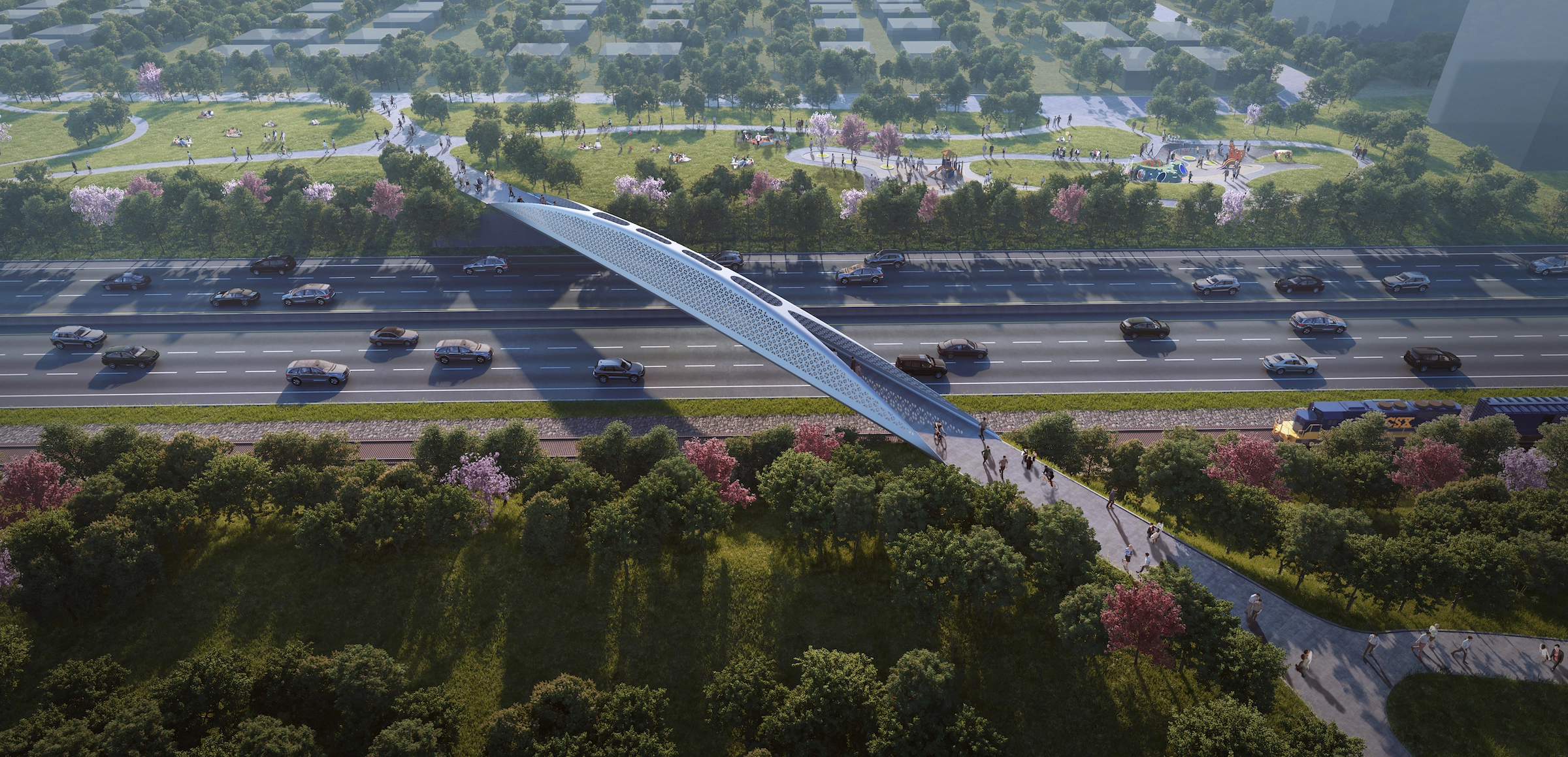
When installed, the bridge will carry pedestrians and cyclists over I-190 and a freight line to a revitalized lakefront park. Image © Schlaich Bergermann Partner
The new structure replaces a poorly lit switchback bridge, which was not known for its safety. The design by sbp will address those security concerns through several measures. By placing the bridge at an angle over the interstate and freight rail below, the team was able to extend its length to 266 feet, or about double the length of the prior bridge, to allow for the substantial ramps rather than switchbacks, on either side of the structure. The new bridge is also substantially broader, with some 16 feet of clear walking space; and, lastly, a luminous LED display will keep the bridge well-lit during evening hours.
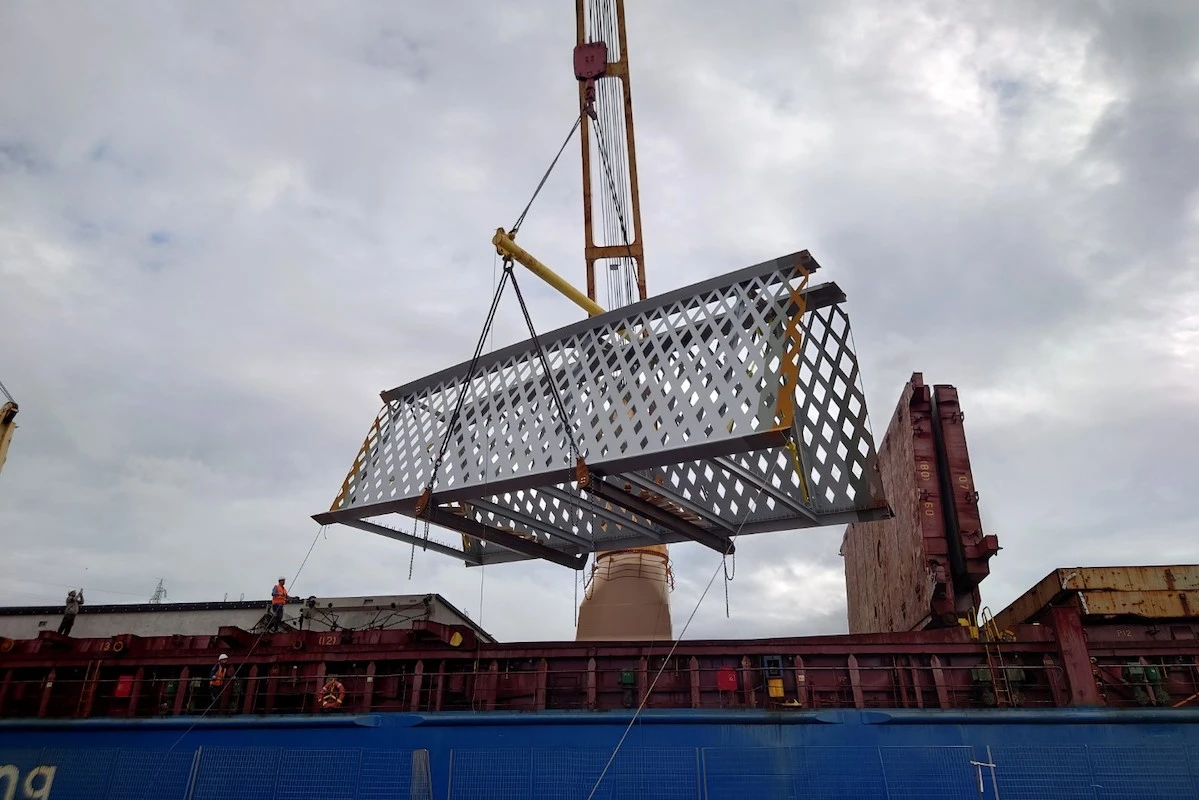
1
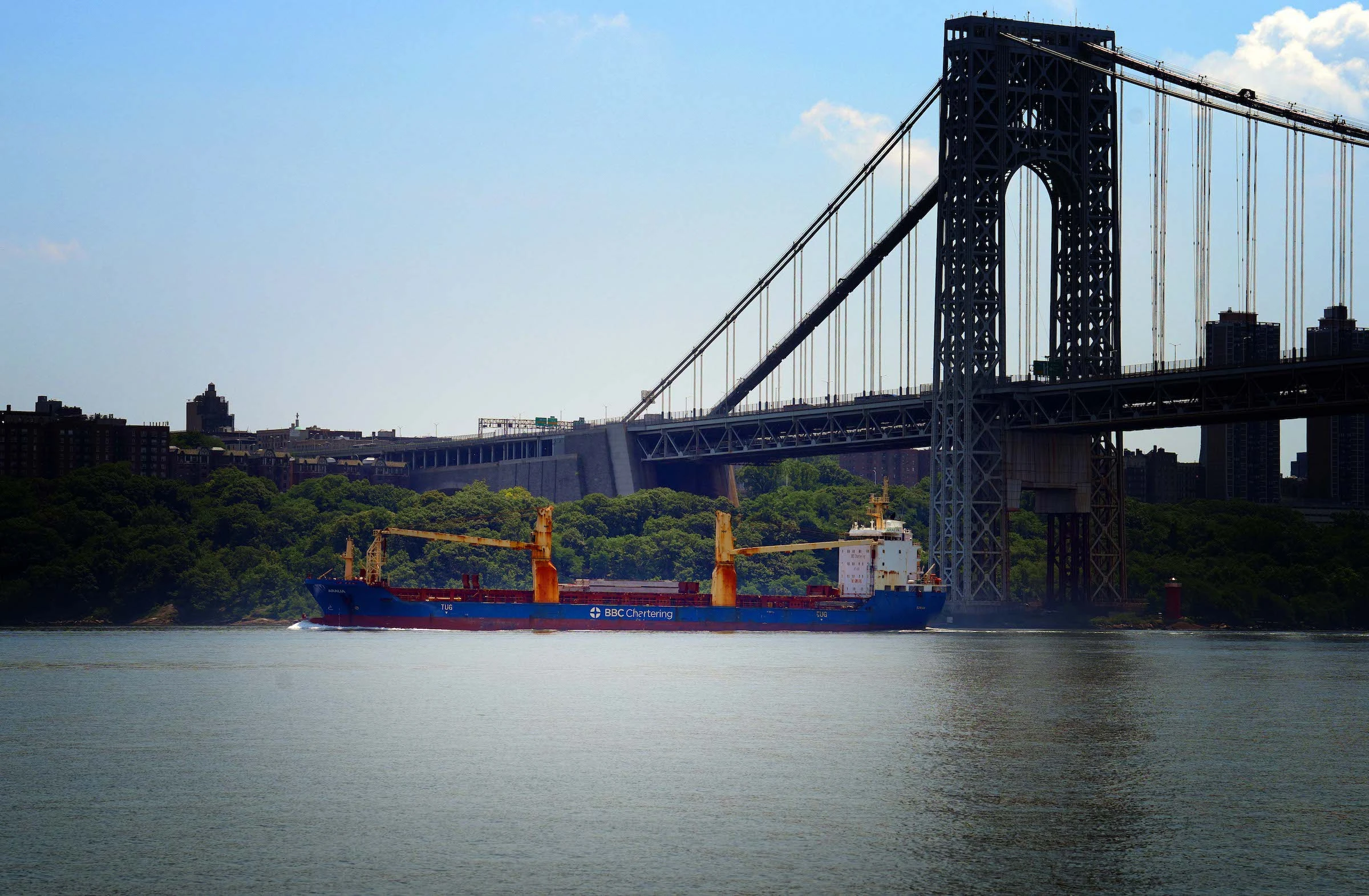
2
The bridge was fabricated in Italy and loaded onto a ship on the Adriatic Sea (1); it passed beneath the George Washington Bridge in New York City on its journey up the Hudson River (2). Photos © Cimolai (1), Ralph Wilson Park Conservancy (2)
While the configuration of the new bridge will allow for direct vistas towards Lake Erie, the design team still had to contend with the unsightly—and often loud—interstate below. To that end, according to sbp project manager Stephan Hollinger, the bridge incorporates perforated hangar plates, rather than typical cables, to better shield users from the noise. The design also provides an opportunity to create a new city landmark. “We are trying to create not just something unique, but a structure that relates to Buffalo’s industrial and architectural heritage,” explains Hollinger.
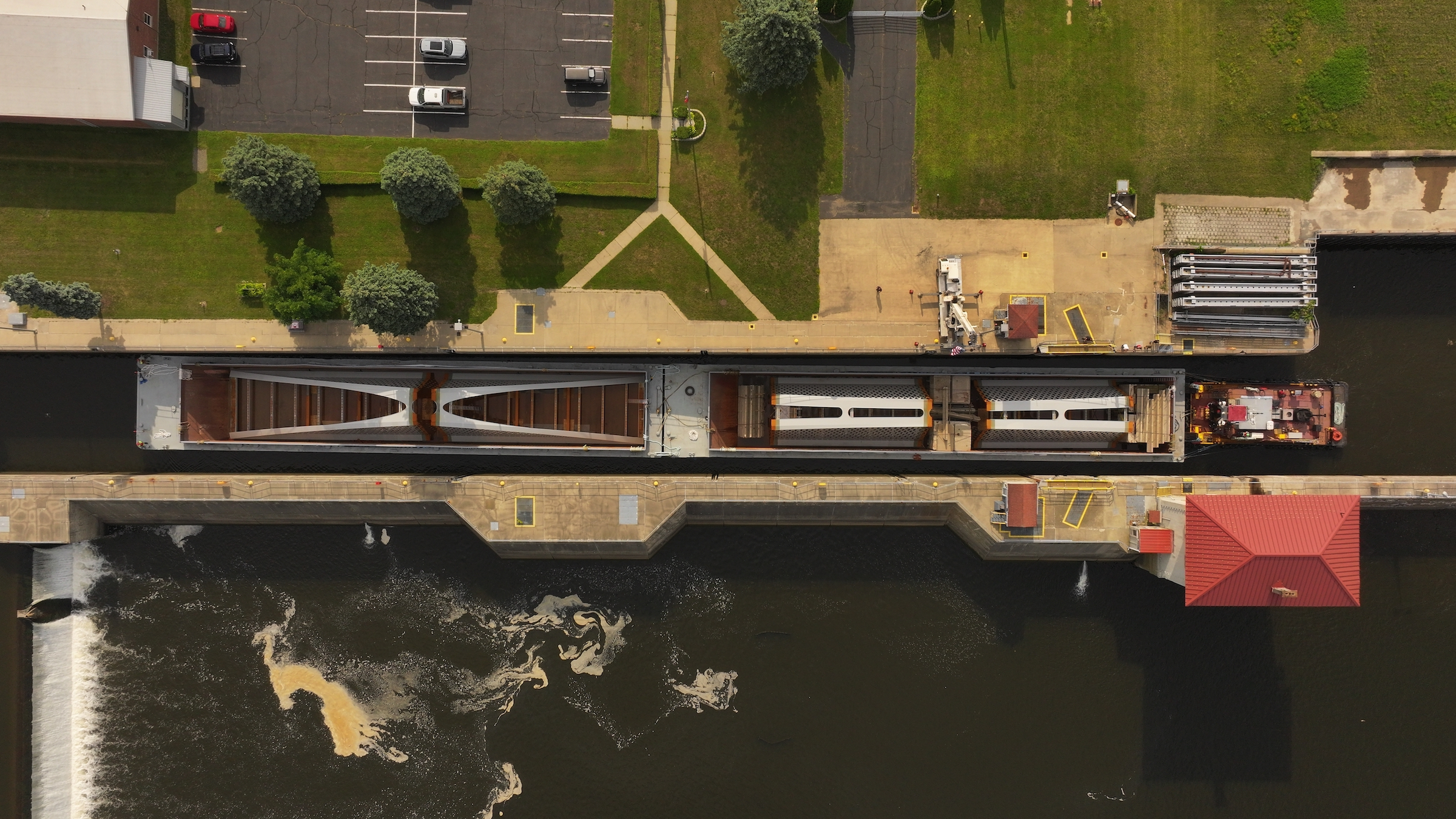

The bridge is made up of four components, and they passed through the many locks of the Erie Canal. Photos © Ralph Wilson Park Conservancy
In the opinion of some, the Erie Canal made New York. The canal opened in 1825, winding its way through the Mohawk Valley, between the dense peaks of the Catskill and Adirondak Mountain ranges, to link the Hudson River with the Great Lakes. Buffalo, at the canal’s western extremity, emerged as one of leading grain ports in the country, acting as a crucial go-between for the agricultural heartland of the continental United States and international markets. While the city’s heyday as a leading entrepot is long gone, and the Erie Canal has largely faded into a touristic relic, replete with vacation barges, it just so happens that the canal proved the most expeditious route for transporting the bridge, which was fabricated and shipped in four sections. The two-week journey across the waterway, which celebrates its bicentennial next year, brought thousands to its banks. “People were both awed by the bridge’s beauty and the engineering marvel that is the Erie Canal, that can still ship cargo like this,” says Ralph Wilson Park Conservancy executive director Katie Campos. “It is part of a very positive movement building in Buffalo, a city known for its architectural significance, that is now seeing reinvestment in its art and architecture.”
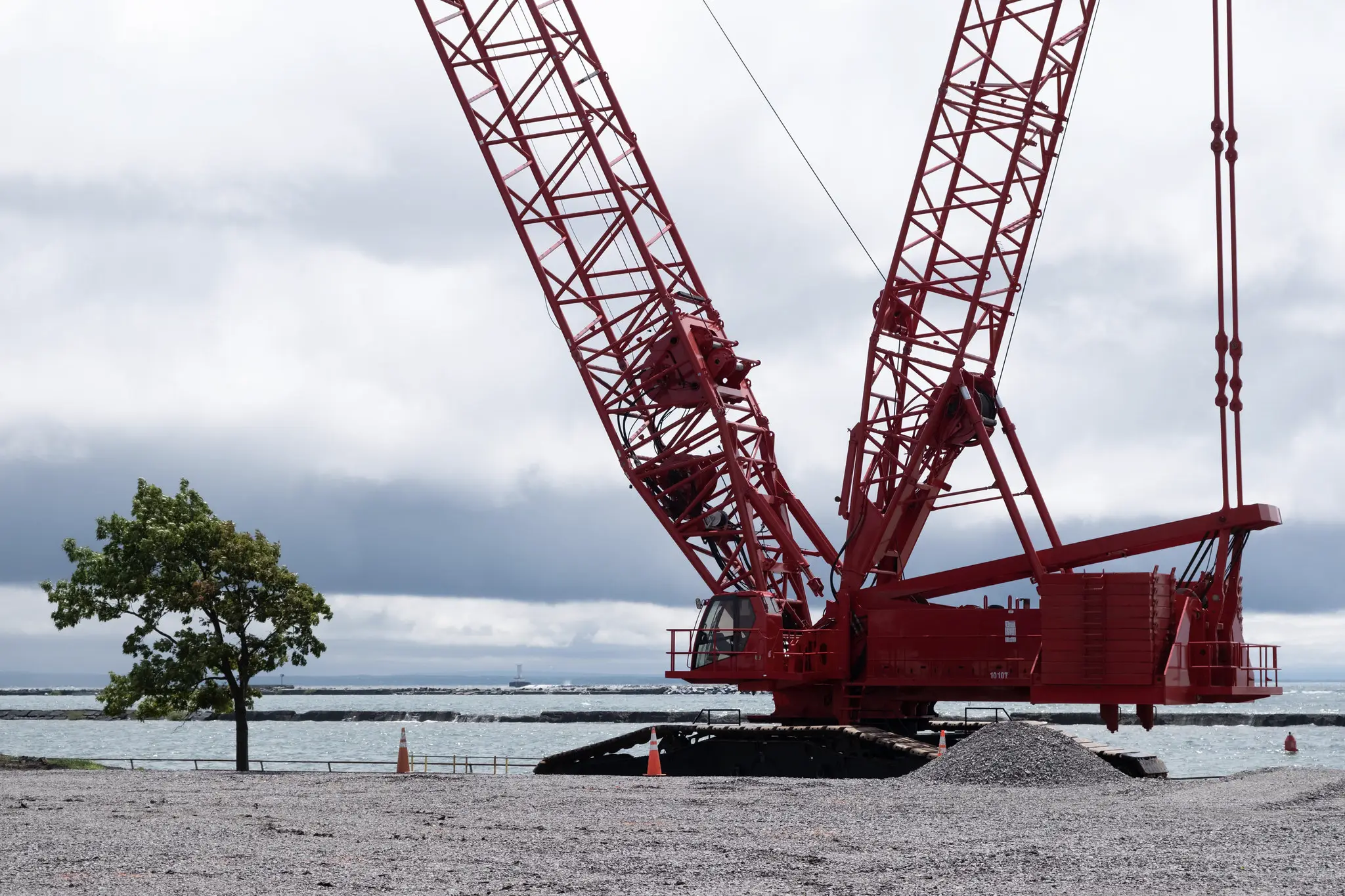
The bridge is currently being welded together and assembled on site. It will be craned into position in the fall. Photo © Ralph Wilson Park Conservancy
The bridge arrived along the shores of Ralph Wilson Park on July 15, and the process of welding and painting the components into a single tied-arch structure began shortly thereafter. In September, it will be moved across the park to be prepped further, before being craned and installed into position in October. The revamped lakefront park is expected to open in phases starting in 2026.




-High-Caliber-Captures.jpg?height=200&t=1725895765&width=200)
